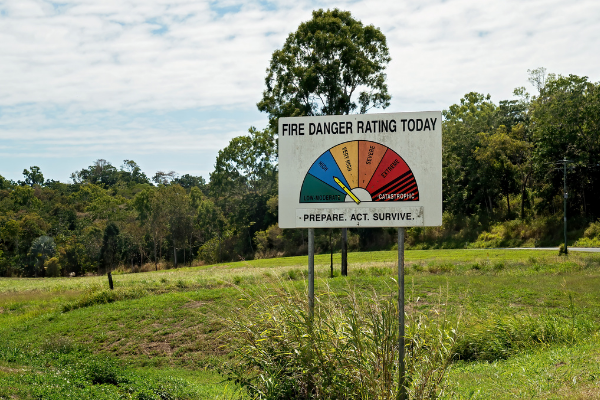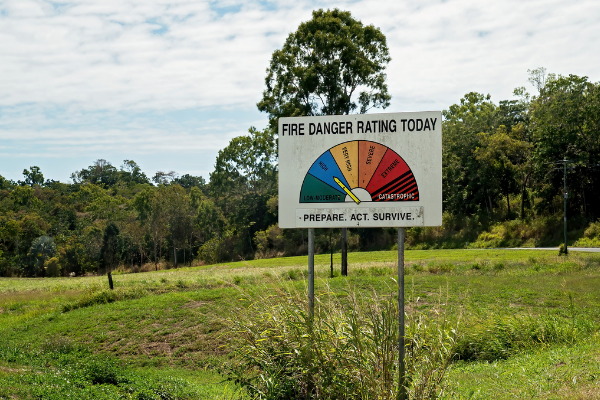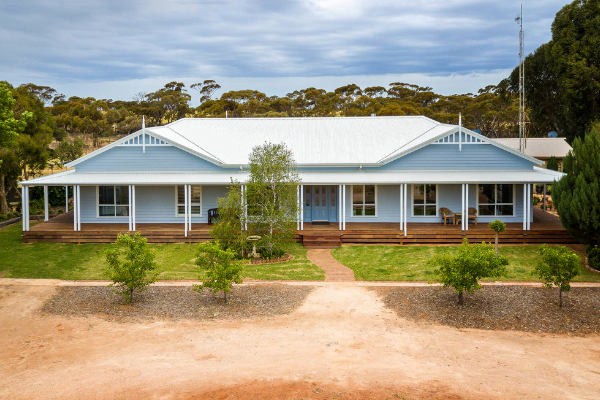-
Leading builders of Modular Homes in NSW, VIC, & SA
-
-
Leading builders of Modular Homes in NSW, VIC, & SA

Before building a new home it is important to check whether the land is in a Bushfire Prone Area. If it is, you will need to find out what measures need to be undertaken for legal and safety reasons. You need to: find out the Bushfire Attack Level (BAL) rating where you are building your home and what that BAL rating means; consider the BAL rating in determining the planning and design of your home; and learn how to practically prepare for each bushfire season.

Bushfire Prone Area
What is it? The Victorian Department of Environment, Land, Water and Planning outlines that:
“Bushfire Prone Areas are areas where the bushfire hazard has been identified and mapped under the building system. These areas are subject to or likely to be subject to bushfires. This triggers building permit requirements where new buildings are required to build to a national bushfire construction standard. This is known as a Bushfire Attack Level (BAL)”.
Any new home in a BPA must be built to withstand a minimum of 12.5 kilowatts of energy per metre squared, even if the BAL Assessment is not deemed significant. This means the expected radiant heat does not warrant specific construction requirements but rather it is standard as a precautionary measure.
BAL Ratings
Here is a brief summary of the BAL levels with their descriptions of the Bushfire Attack:
- Low BAL: low risk of radiant heat but possible risk of ember attack
- BAL -12.5: low risk of radiant heat and primarily at risk of ember attack
- BAL - 19: up to19 kilowatts per metre squared of (moderate) radiant heat and an increased risk of embers, fire borne debris and a higher likelihood of radiant exposure
- BAL - 29: up to 29 kilowatts per metre squared of (high) radiant heat due to similar factors
- BAL - 40: up to 40 kilowatts per metre squared of (very high) radiant heat, including all the above risks as well as some direct exposure to flames
- BAL 40 +: over 40 kilowatts per metre squared of (extreme) radiant heat, direct exposure to flames from the fire, as well as ember attack and radiant heat exposure
Swanbuild can meet most of the requirements of BAL overlays. We, unfortunately, cannot construct Flame Zone buildings.

Considerations for planning and design of your home
Swanbuild has features designed specifically for houses that are to be built in fire prone areas. We assess the area and walk you though all the safety measures we can add to your home. This will ensure it has the best possible chance in the case of a fire disaster. Here are some things to consider.
- Required upgrades for your BAL: Certain BAL ratings require specific upgrades to be met. Ask us and we can let you know what they are
- Materials used: Some building materials are more fire or ember resistant than others and consequently a safer choice. We can assist you in choosing the right materials for the BAL level of your property.
- Window and door placement and screening: Seal windows and doors to minimise the risk of embers entering your home. Likewise, choose non-flammable materials for your windows and doors to decrease the risk of embers igniting them in a fire. Put fire shutters on windows or increase the thickness of glass to lessen the chance of them breaking. (Fire usually gets inside houses via windows breaking). Install a screen door on outside doors to reduce the chance of embers igniting on them.
- Ease of future maintenance: Did you know a bell roofline saves you cleaning an extra set of gutters versus a skillion or bullnose verandah? Decks can also be built with non-combustible materials. Our team can share our many years of building and design tips and tricks like these with you via an obligation free consultation.
- Garden and landscape design: The garden should incorporate a defendable space. If possible, surround the property with mature trees as they are likely to withhold an ember attack. Create firebreaks within your garden with dirt and gravel and have space between trees and plants to minimise the risk of them catching fire from each other. Decide carefully which trees you will select for your garden. The CFA website has a Plant Selection Key to guide you on the flammability of plants, where you should plant them and how you should maintain them.
Preparing for bushfire season
If you are building in a BPA you will need to familiarise yourself with preparing your property in the lead up to the bushfire season. Even if your home has been built to potentially withstand a specific BAL, owners must be vigilant with assessing risks in and around the property to optimise their safety.
- Preparing your property: Keep the gutters cleared of leaf litter and wood piles away from the house. Move outdoor furniture away or inside the residence during the fire season to minimise the likelihood of spot fires from embers. Clear the land around your property from vegetation, tree branches and the like. Keep flammable materials (gas and so forth) stored away from the house. https://www.cfa.vic.gov.au/plan-prepare/how-to-prepare-your-property
- Maintenance and garden aspects: The lawn should be mown, leaves raked and plants pruned.
Bushfires are a real threat to our lives and properties in Australia so it is important to arm yourself with all the information possible and take a holistic approach in terms of undertaking preventative measures. Contact Swanbuild today and ask us how we can assist you.


